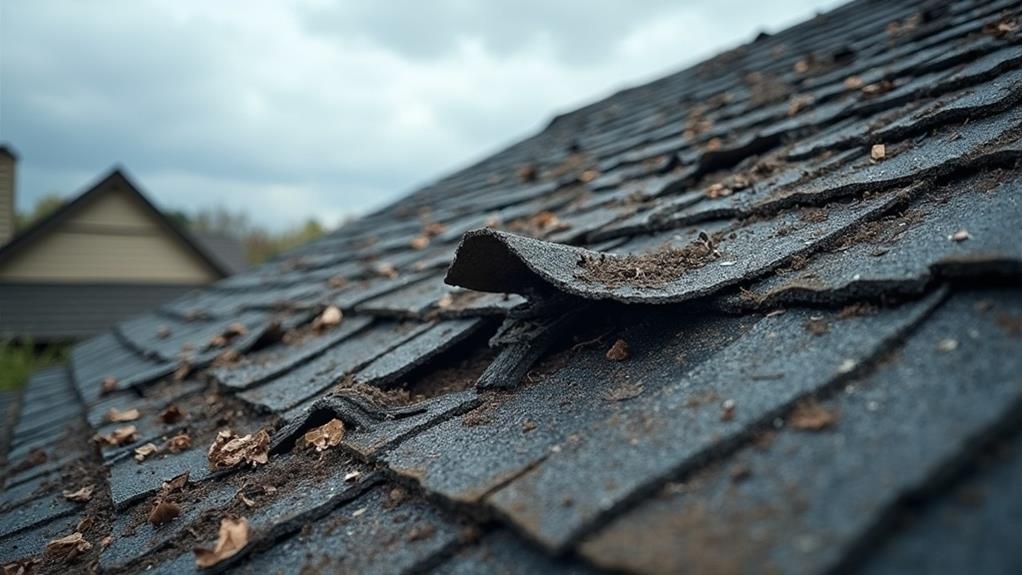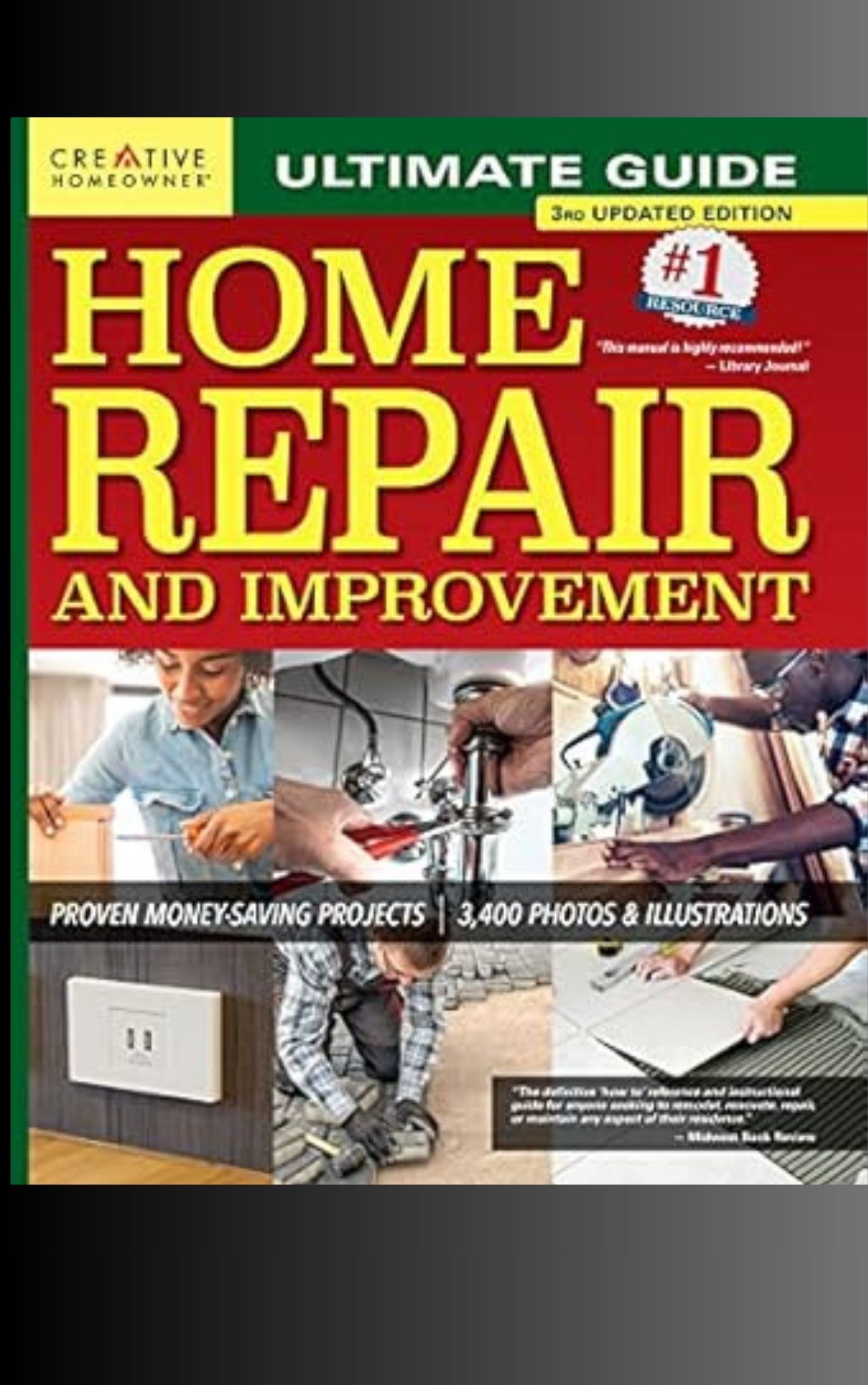To spot wind-lifted shingles after a storm, start with a ground-level visual inspection. Look for curled or raised edges along the bottom of shingles and check for overall uniformity of the roof's surface. Use binoculars for a clearer view, focusing on corners, edges, and areas around chimneys or vents. On the roof itself, inspect for loose, misaligned shingles with gaps between them and examine flashing around roof penetrations. Inside, check for water stains, mold growth, or visible daylight through roof boards. If you notice multiple lifted shingles, extensive damage, or signs of water infiltration, it's time to consult a professional for a thorough assessment.
Visual Inspection From the Ground
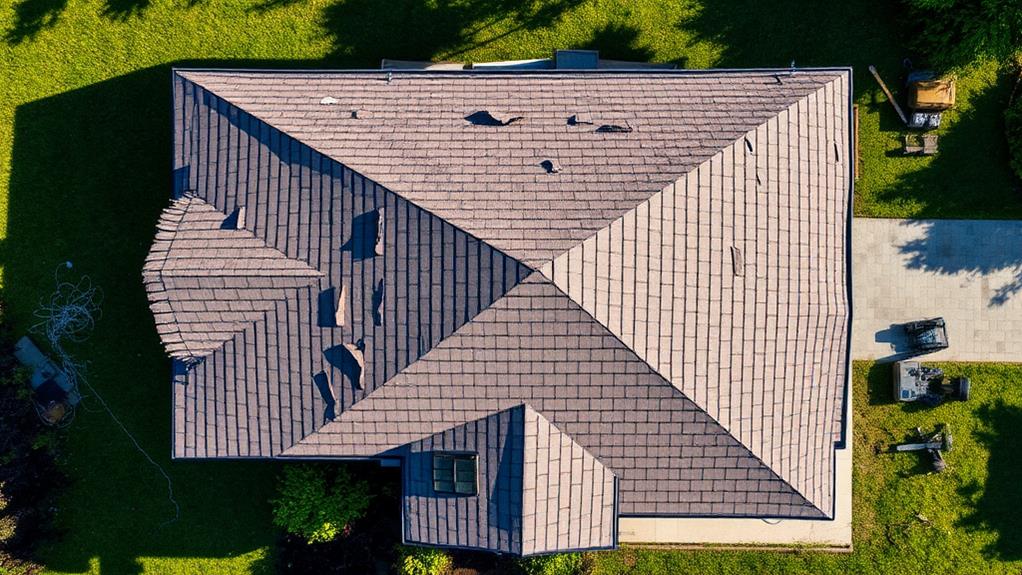
Three key indicators can help homeowners spot wind-lifted shingles during a ground-level inspection. First, look for curled or lifted edges along the bottom of shingles. Wind can force these edges upward, creating visible gaps or shadows.
Second, observe the overall uniformity of the roof's surface. Wind-damaged areas may appear uneven or raised compared to surrounding sections.
Third, check for missing granules or bare spots on shingles, which can result from wind action and indicate potential lifting.
When conducting a visual inspection, use binoculars for a clearer view of the roof's condition. Pay special attention to corners, edges, and areas around chimneys or vents, as these are more susceptible to wind damage. Look for loose or missing shingles, which can be a sign of wind uplift in adjacent areas. Also, examine the ground around your home for fallen shingle pieces or granules, which may indicate damage above.
While a ground-level inspection can reveal obvious signs of wind-lifted shingles, it's important to note that some damage may not be visible from below. If you suspect wind damage or notice any of these indicators, it's advisable to consult a professional roofing contractor for a thorough inspection and assessment.
Telltale Signs on the Roof
While ground-level inspections can reveal some signs of wind damage, a closer examination of the roof itself provides more definitive evidence of wind-lifted shingles. Look for curled or raised edges on individual shingles, particularly along the roof's edges and corners where wind pressure is often strongest. Shingles that appear loose, misaligned, or have gaps between them are clear indicators of wind damage.
Check for missing granules on shingles, which may leave dark, bare spots visible. Wind can cause shingles to rub against each other, leading to granule loss. Inspect the flashing around chimneys, vents, and other roof penetrations for signs of lifting or separation. These areas are vulnerable to wind damage and can allow water infiltration if compromised.
Pay attention to any visible nail pops, where roofing nails have been partially pulled out of the roof deck. This can cause shingles to become loose and more susceptible to wind uplift. Also, look for creases or indentations across shingles, which may indicate they've been bent or folded by strong winds. These weakened areas are prone to further damage and potential leaks if left unaddressed.
Using Binoculars for Closer Examination
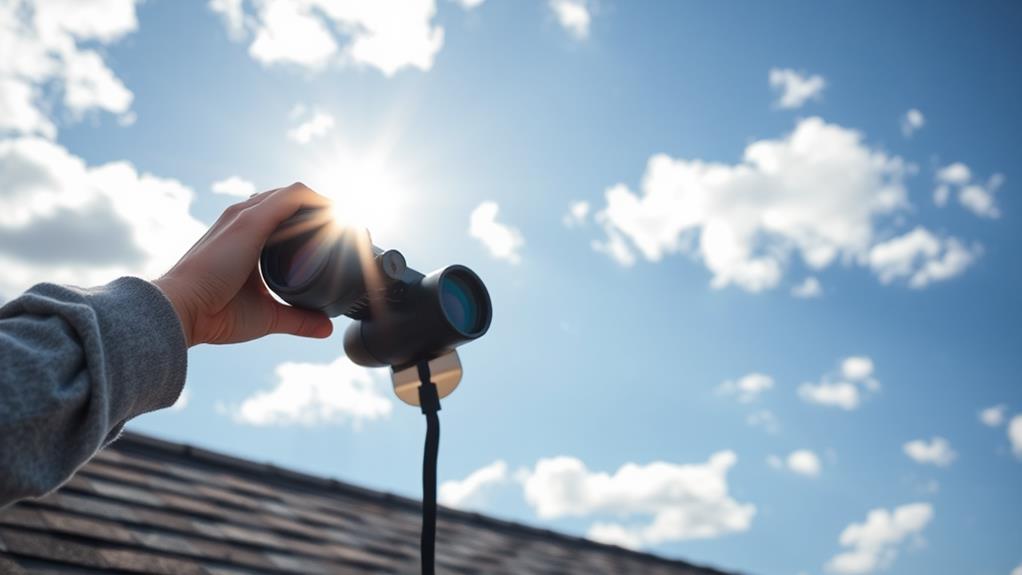
For a more detailed inspection without risking safety, binoculars offer an excellent tool to examine your roof from the ground. Choose a pair with sufficient magnification, typically 8x to 10x, to observe individual shingles clearly. Stand at various angles around your property to get comprehensive views of all roof sections.
When using binoculars, focus on specific areas where wind damage is more likely to occur. Pay close attention to the edges and corners of the roof, as these are particularly vulnerable to wind uplift. Look for shingles that appear raised, curled, or separated from adjacent ones.
Inspect the flashing around chimneys, vents, and skylights for any signs of displacement or damage. Observe the overall pattern of the shingles, noting any irregularities or gaps in the rows. Check for missing granules, which may appear as dark spots or patches on the shingles. Also, scan for any debris trapped under lifted shingles, as this can prevent them from lying flat.
Checking Interior Spaces for Clues
After conducting an external inspection, it's important to turn your attention inward. Interior spaces can provide valuable clues about potential roof damage, particularly wind-lifted shingles.
Begin by examining your attic or the uppermost floor of your home. Look for signs of water infiltration, such as damp spots, water stains, or mold growth on the ceiling or walls. These indicators suggest that your roof's integrity may have been compromised during the storm.
Pay close attention to areas around chimneys, vents, and skylights, as these are common entry points for water when shingles are damaged or lifted. Check for any daylight visible through the roof boards, which could indicate missing shingles or severe damage. Listen for unusual sounds during windy conditions, as loose shingles may create distinct flapping or rattling noises.
Inspect interior walls and ceilings throughout your home for discoloration, peeling paint, or bubbling wallpaper. These symptoms often appear after water has seeped through damaged roofing materials. If you notice any of these signs, it's crucial to address the issue promptly to prevent further damage and potential structural issues.
When to Call a Professional
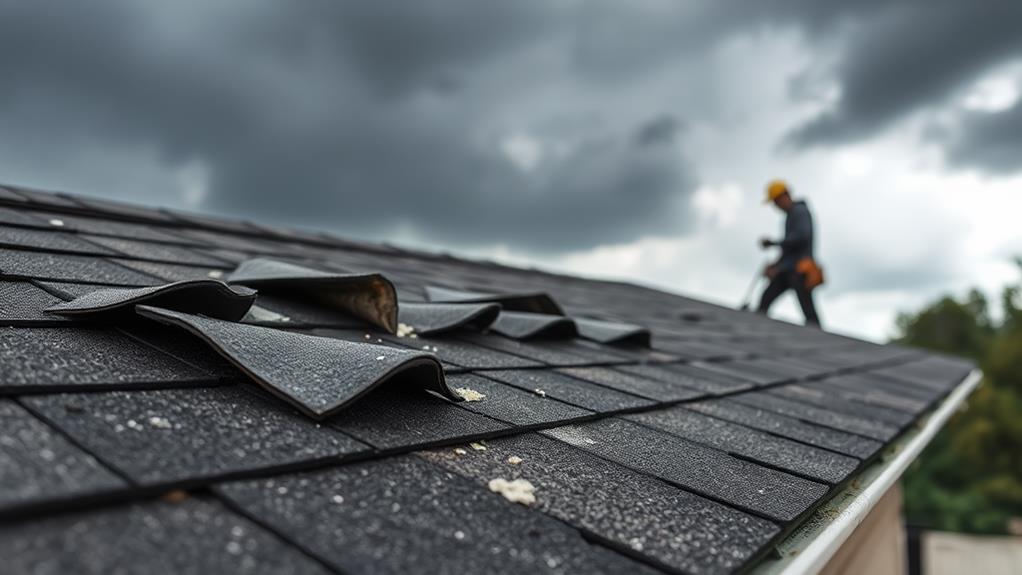
Recognizing the limits of one's expertise is crucial when dealing with potential roof damage. While homeowners can perform initial inspections, certain situations warrant professional intervention. Call a roofing expert if you observe multiple lifted or missing shingles, extensive granule loss, or signs of water infiltration inside your home.
Professional assessment is necessary when accessing the roof poses safety risks, such as steep pitches or multi-story structures. Additionally, if you lack the proper equipment or experience to safely navigate the roof, it's best to defer to a professional. Roofing contractors possess specialized tools and knowledge to identify subtle signs of damage that may not be apparent to untrained eyes.
If your roof is older or has a history of problems, professional evaluation becomes even more critical. Experts can determine whether wind damage has exacerbated existing issues or if a full roof replacement is necessary. Insurance claims often require professional documentation, so involving a certified roofing contractor early in the process can streamline your claim and ensure accurate assessment of the damage. Ultimately, prioritizing safety and seeking professional expertise when needed can prevent further damage and costly repairs in the long run.
Frequently Asked Questions
Can Wind-Lifted Shingles Settle Back Into Place on Their Own?
Wind-lifted shingles rarely settle back into place on their own. The adhesive strip beneath the shingles typically loses its effectiveness once lifted, compromising the roof's integrity. Professional inspection and repair are recommended to prevent potential water damage and further issues.
How Long After a Storm Should I Inspect for Wind-Lifted Shingles?
Did you know that 95% of roof damage occurs within 48 hours of a storm? Inspect for wind-lifted shingles as soon as it's safe, ideally within 24-48 hours. Prompt assessment prevents further damage and ensures timely repairs.
Are Certain Types of Shingles More Resistant to Wind Damage?
Certain shingle types are indeed more wind-resistant. Architectural and impact-resistant shingles generally offer superior wind protection compared to standard 3-tab shingles. Higher-quality materials and proper installation also contribute significantly to a roof's ability to withstand wind damage.
Does Homeowners Insurance Typically Cover Wind-Lifted Shingle Repairs?
Homeowners insurance typically covers wind-lifted shingle repairs, as wind damage is generally considered a covered peril. However, coverage may vary depending on policy specifics, deductibles, and the extent of damage. Always review your policy for details.
Can I Temporarily Secure Wind-Lifted Shingles Myself Before Professional Repairs?
While it's possible to temporarily secure wind-lifted shingles yourself, it's generally not recommended. Improper handling can cause further damage and void warranties. For safety and best results, contact a professional roofing contractor for immediate repairs.
Conclusion
Identifying wind-lifted shingles promptly after a storm is crucial for preventing further damage to a home's roof and interior. According to the National Roofing Contractors Association, wind damage accounts for approximately 25% of all homeowners insurance claims. Regular inspections, both from the ground and on the roof itself, can help detect early signs of shingle damage. When in doubt, consulting a professional roofing contractor ensures a thorough assessment and appropriate repairs, safeguarding the property's structural integrity and value.
